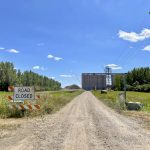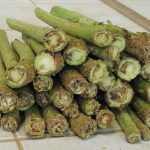
Oilseeds

Neonics still best flea beetle option
There’s mounting evidence the European ban has significant unintended consequences, entomologist says

SCN: The new tough guy on the block
Soybean cyst nematode’s survival mechanisms make it difficult to monitor and control

Tracing roots for a strategy against soybean cyst nematode
How soybean ancestors helped scientists tease out SCN resistance

Renewable diesel demand expected to soar in next two years
Canola production poised to jump as new facilities come on stream in next two years, says processors association

An inoculation against blackleg
University of Manitoba trial shows a less-virulent strain boosts canola’s natural defences

New processors to reshape North Dakota’s export-focused soy sector
Additional capacity will change grain production and transportation links in the region

Getting a leg up on blackleg
New research finds blackleg populations are more diverse in Manitoba

Cut canola later for higher yield
Canola Council launches campaign to persuade farmers of the benefits of patience

Crowdsourcing canola counts
Results coming in from first year of the Canola Council of Canada’s ‘Canola Counts’ survey

Crusted soil hampers canola emergence
Short supplies of canola seed causing issues for some reseeding farmers


